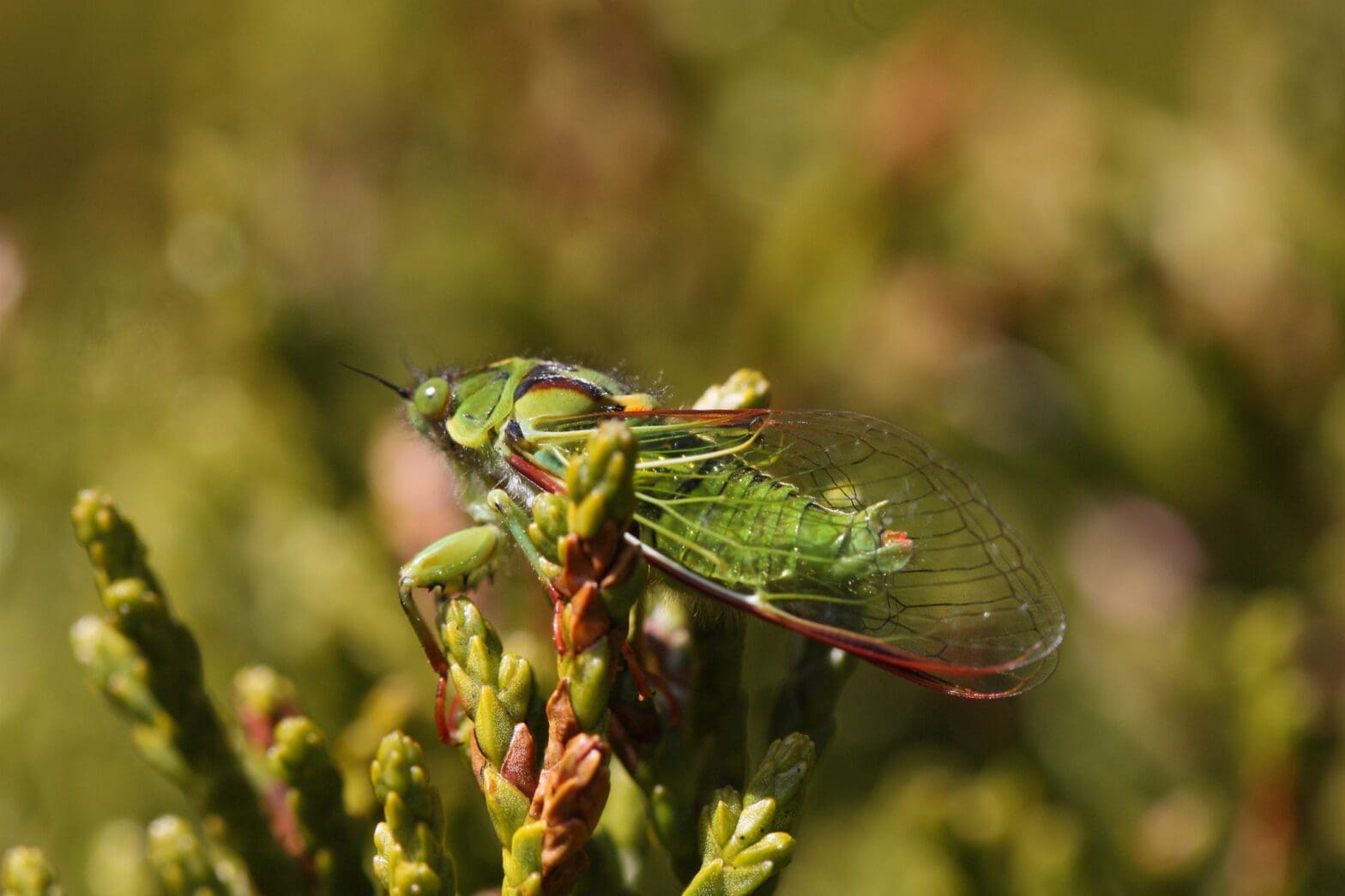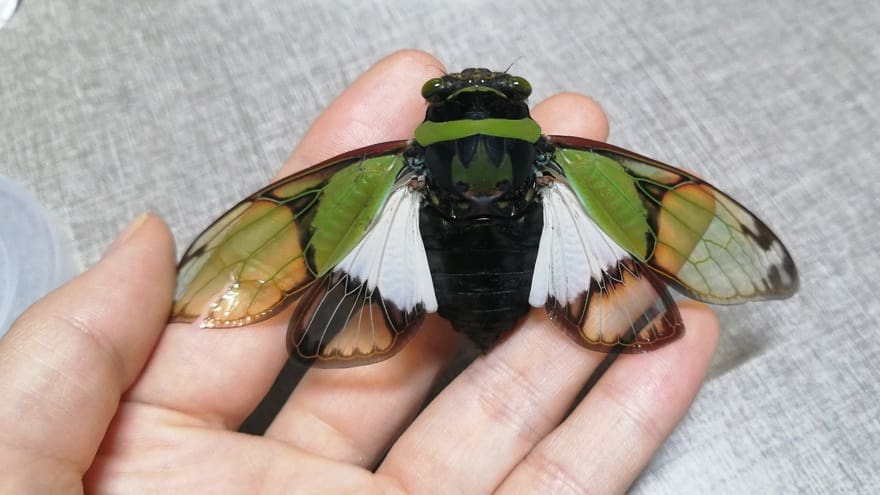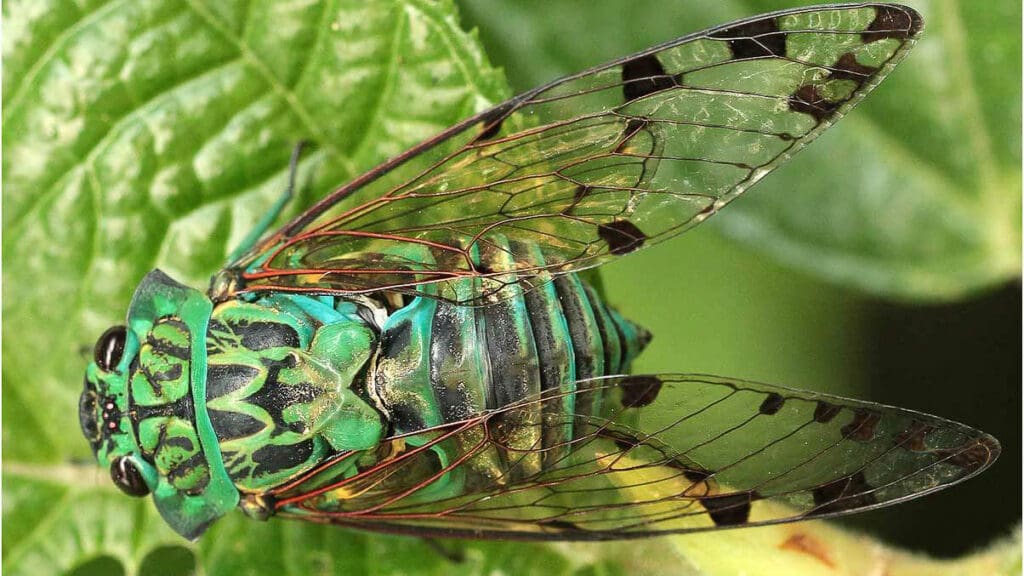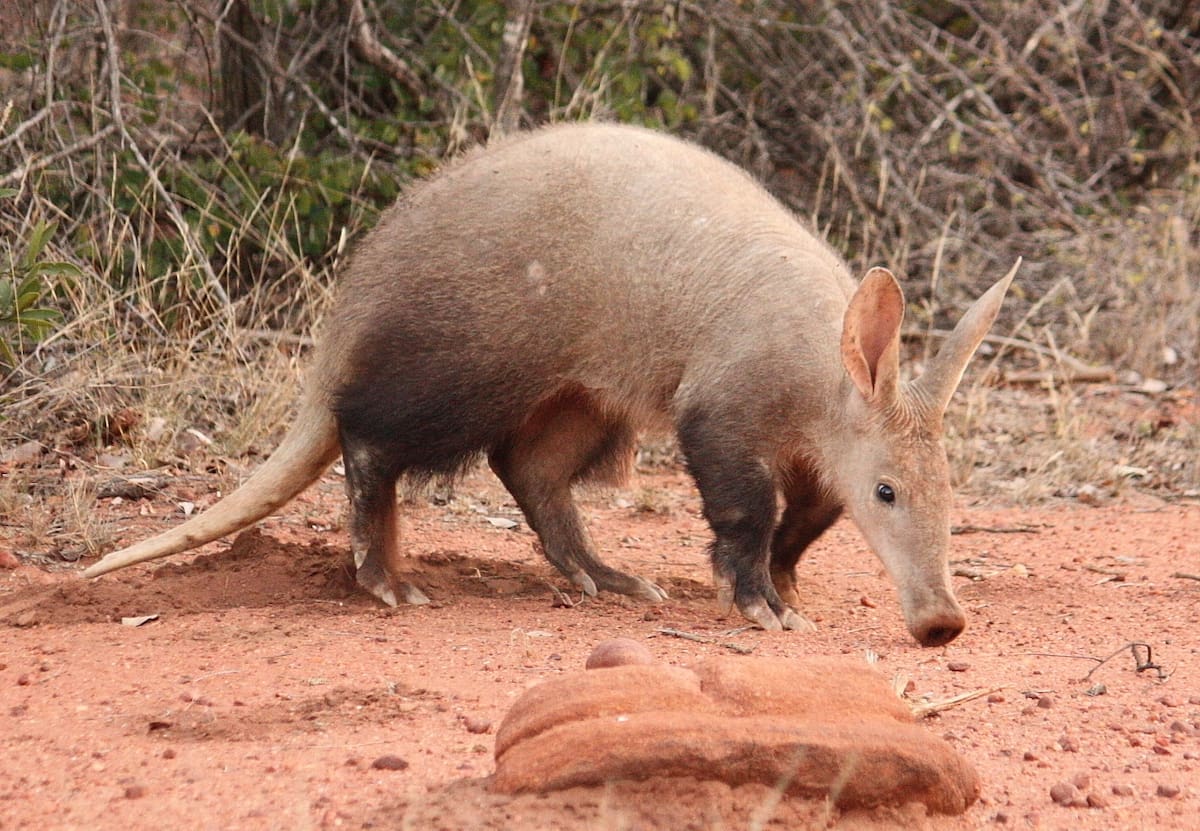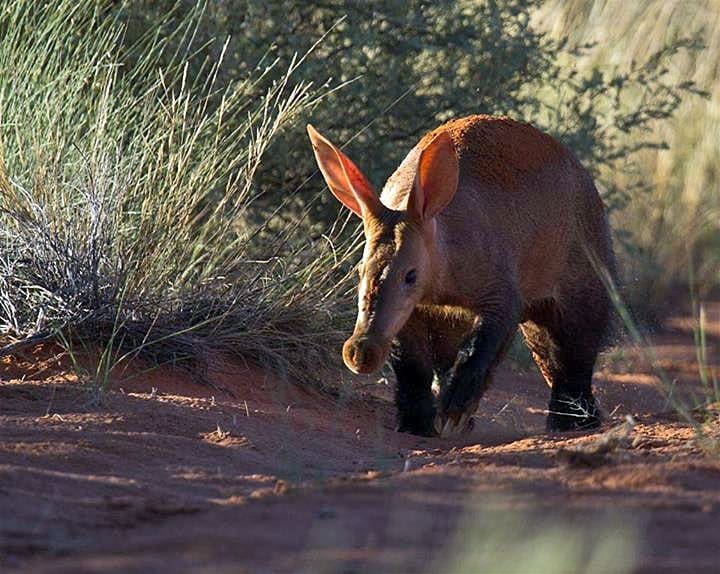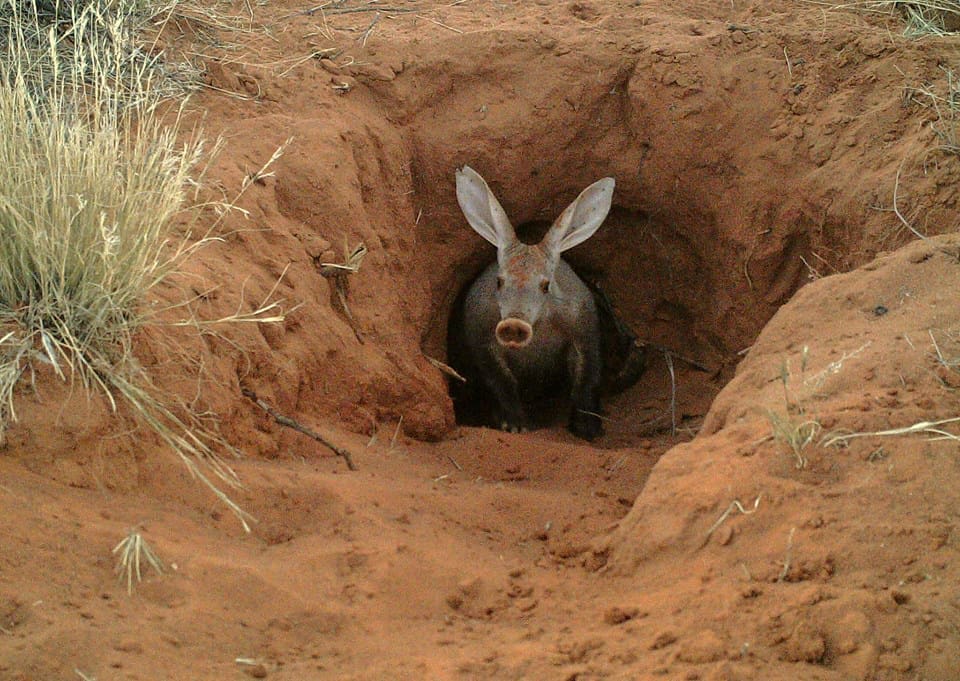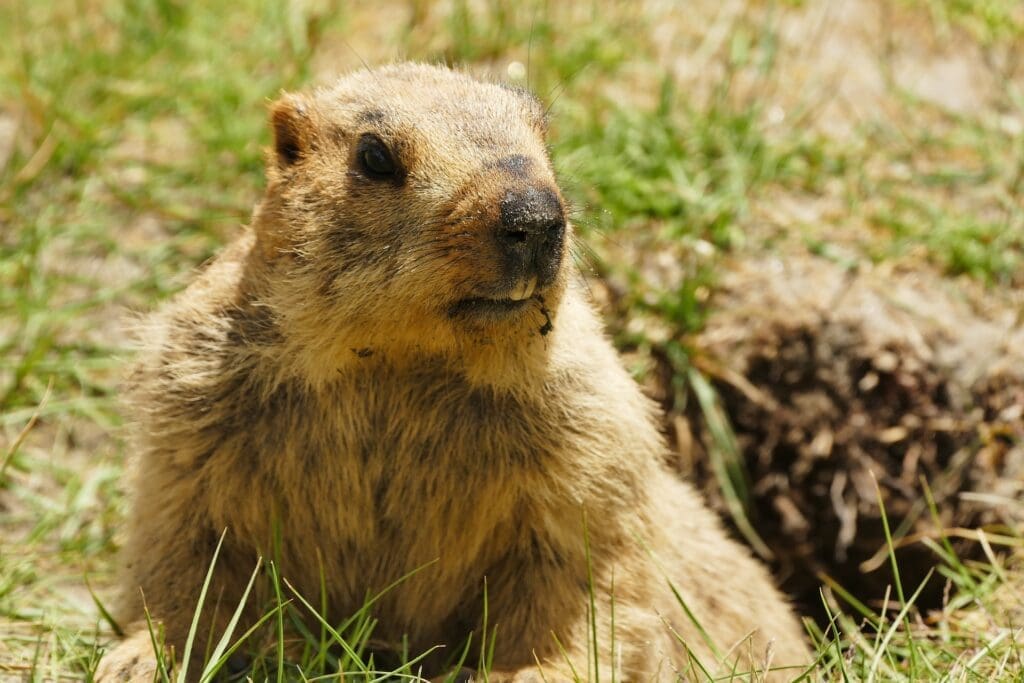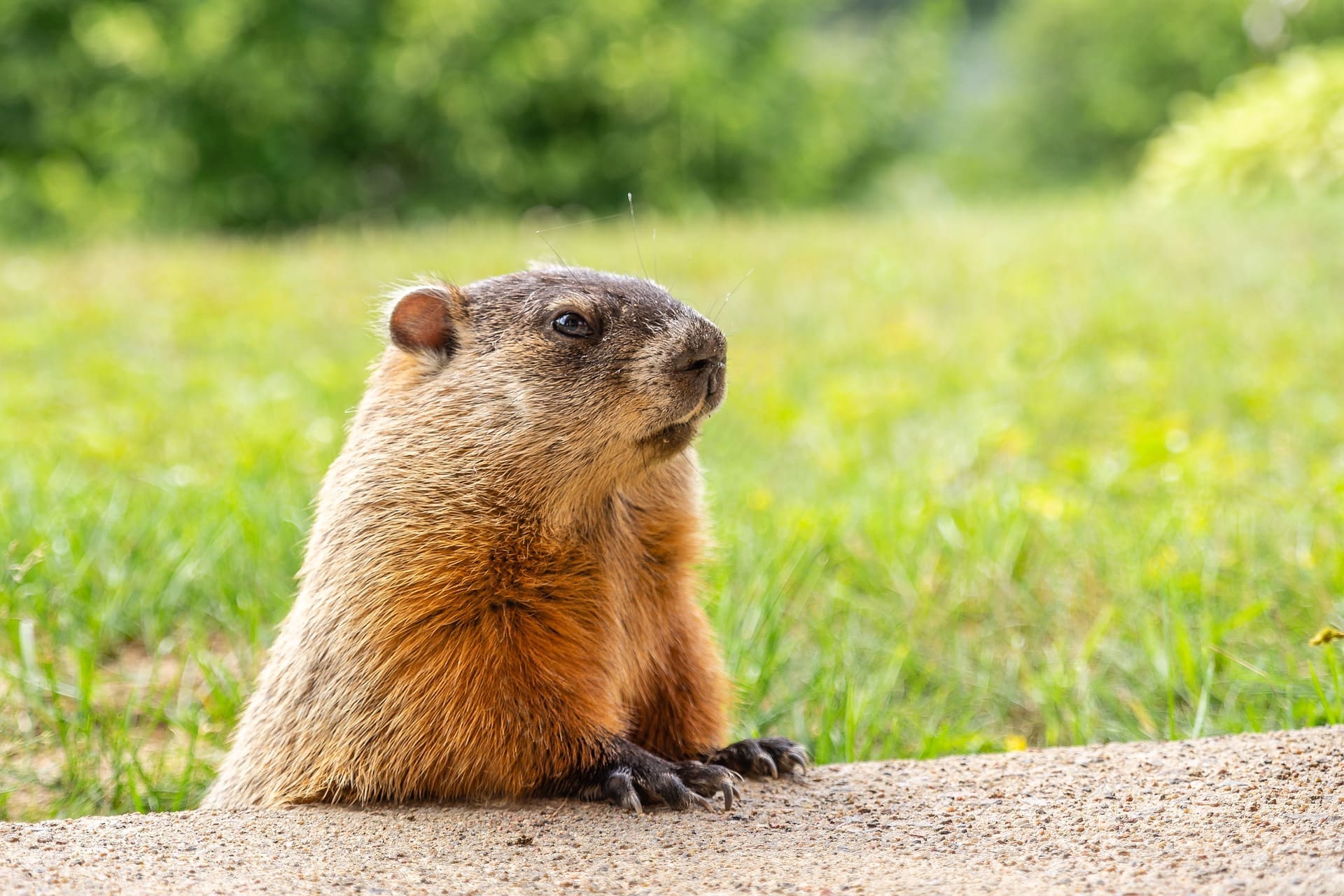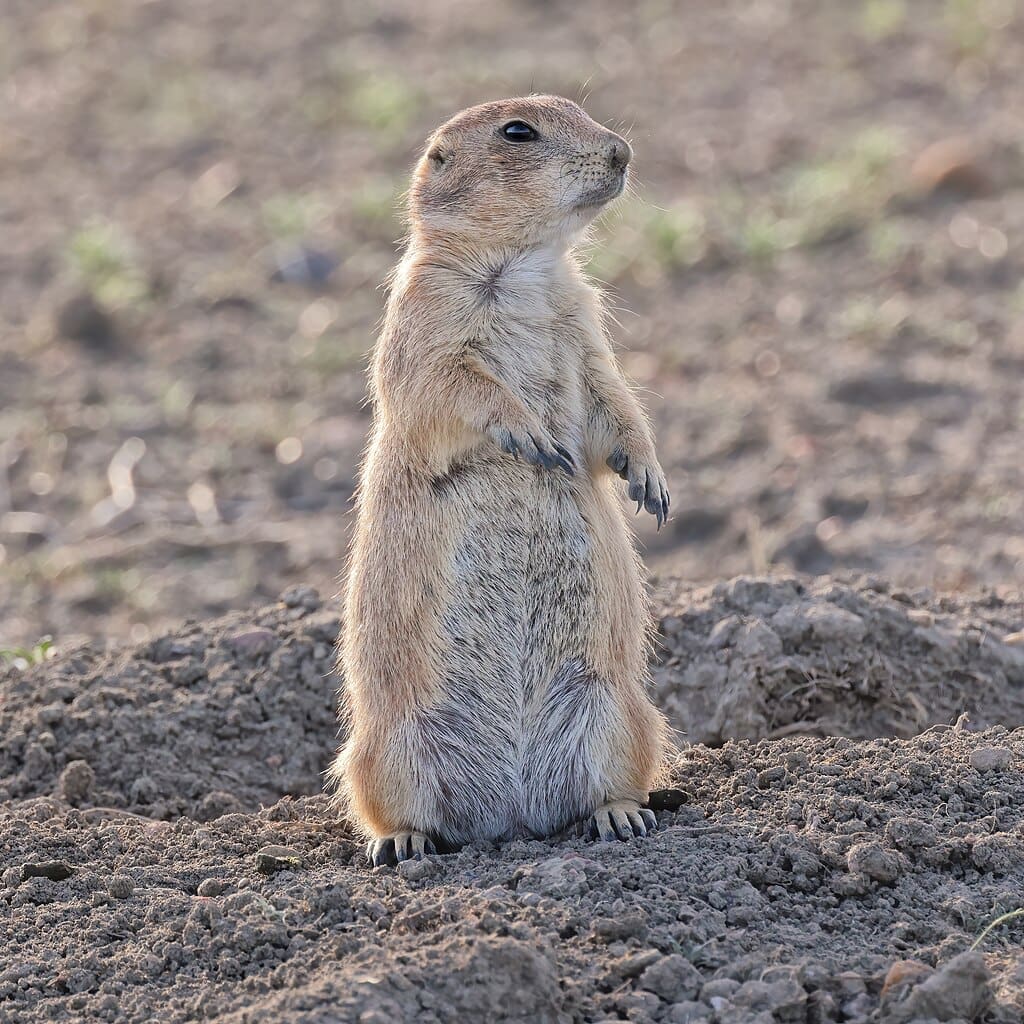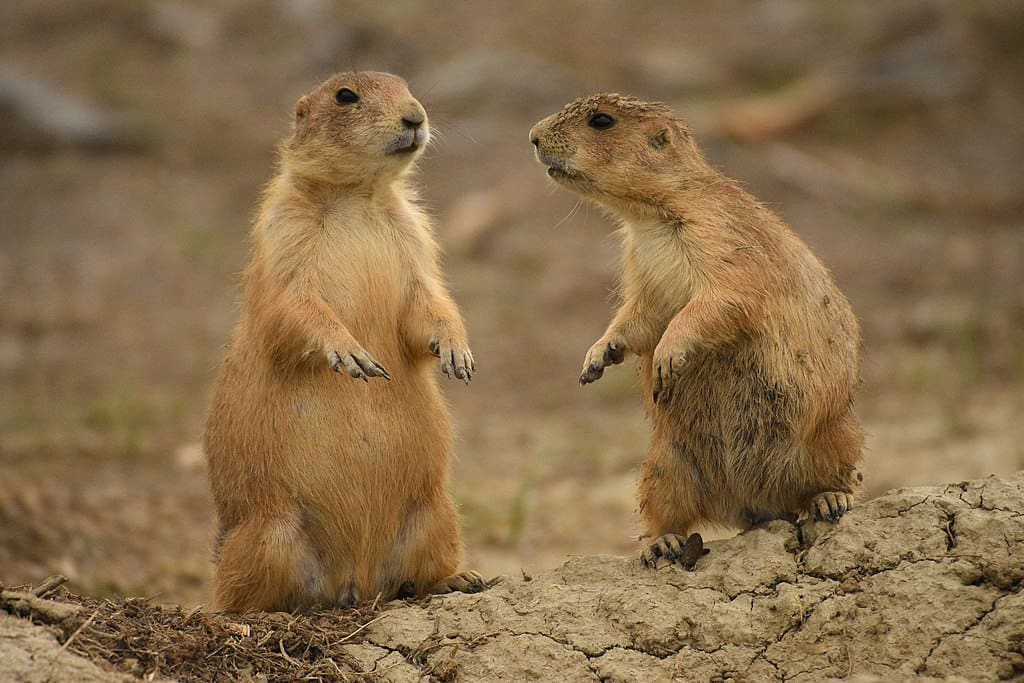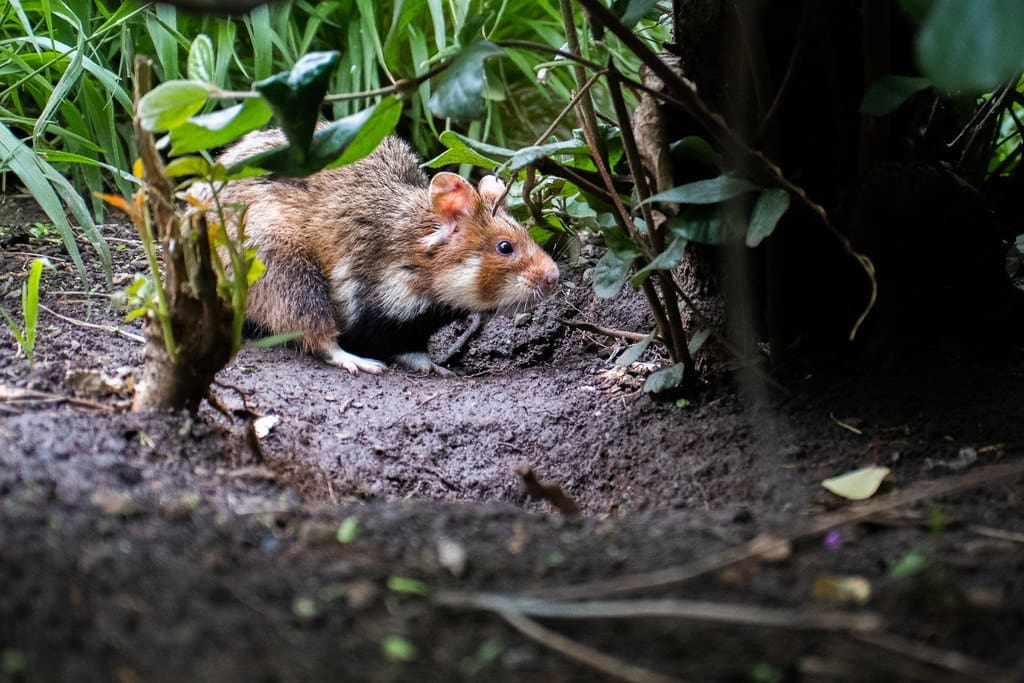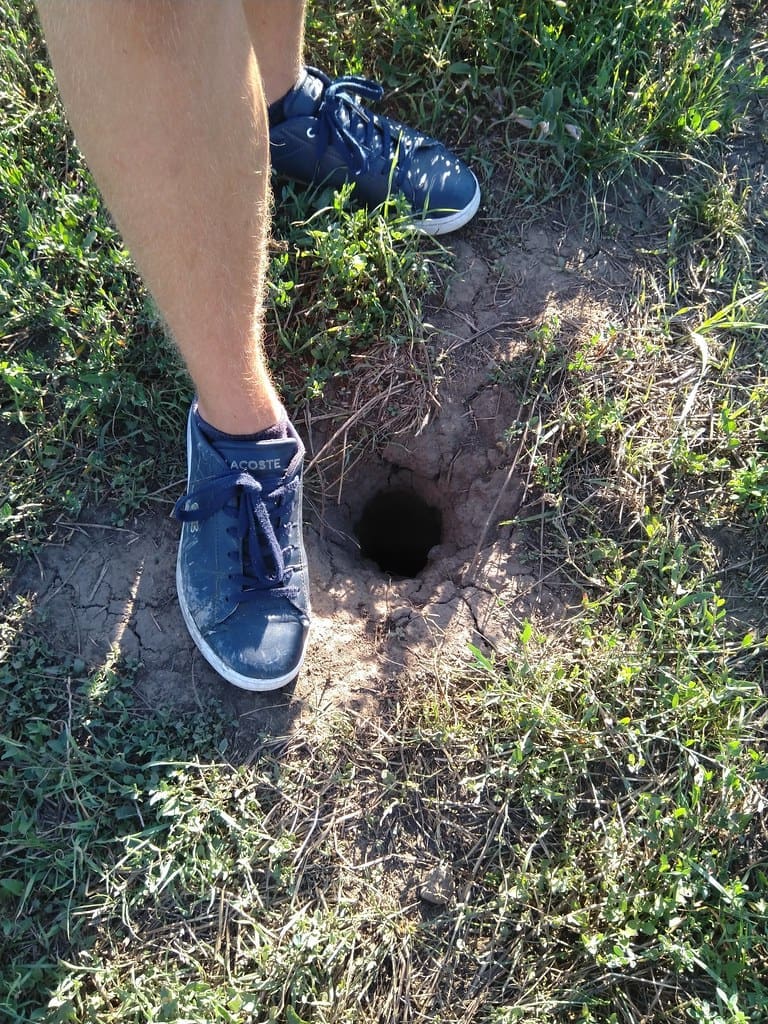What insect spends years hidden underground, preparing for a brief but spectacular emergence into the sunlight, filling the air with the deafening, iconic song of summer?
The cicada (Cicadoidea)!
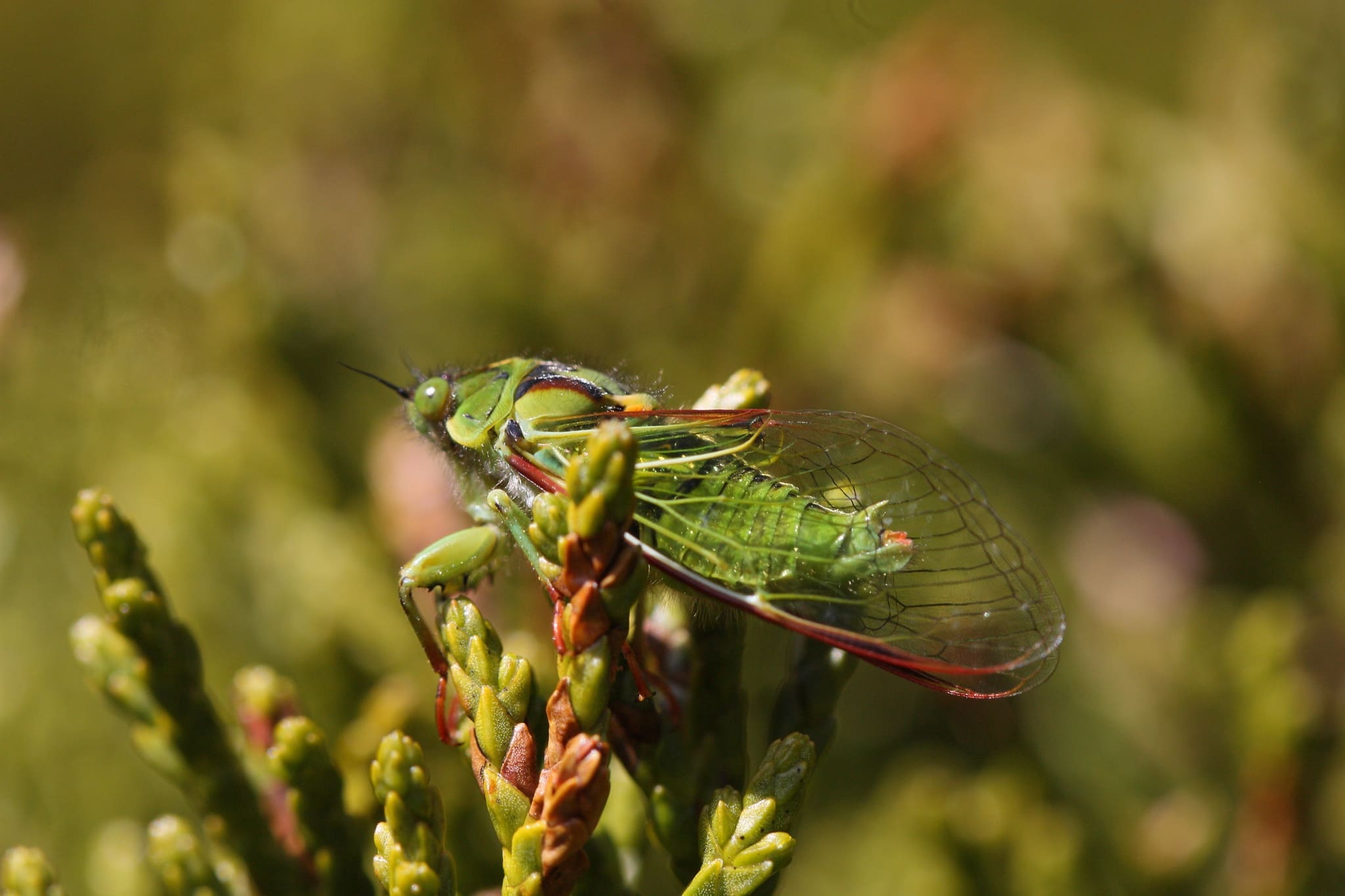
Every time I return to the south of France, there’s one sound that immediately signals to me that summer has arrived—the unmistakable hum of cicadas. Their chorus, loud and unrelenting, fills the air in the warm Mediterranean heat and acts as a personal cue to pause, take a breath, and unwind. For me, it’s not just the start of summer; it’s the sound of nostalgia, the reminder of countless days spent hiking through the pine forests, picnicking under the shade of olive trees, or simply soaking in peaceful serenity at the beach. The cicadas’ song is always complemented by the sweet, earthy smell of ripening figs. It’s a sensory symphony that epitomizes the region’s charm.
These moments, marked by the rhythmic buzz of cicadas, offer a unique connection to nature—one that I’ve come to cherish as a deeply rooted part of my experience in the region. The cicadas’ song is a call to slow down, reconnect, and embrace the simple beauty of life in the south of France.
As much as these personal experiences have shaped my connection to cicadas, there’s so much more to learn about these fascinating creatures. From their complex life cycles to the essential roles they play in ecosystems around the world, cicadas are much more than the soundtrack of summer.
The Backstory
If the name “cicada” doesn’t quite ring a bell, you might recognize it from Animal Crossing. It’s a common insect that players can encounter in the game.
Cicadas are the loudest insect species in the world, known for their buzzing and clicking noises, typically sung during the day. This song, produced by males to attract females, is a highly specialized mating call. Each species of cicada has its own unique variation, which is genetically inherited rather than learned, unlike the calls of other animals such as birds. Some cicada species, like the double drummer, even group together to amplify their calls, deterring predatory birds by overwhelming them with noise. Others adapt by singing at dusk, avoiding the attention of daytime predators.
If you’re curious about the fascinating science behind how cicadas create their iconic sound and want to dive deeper into their unique anatomy, I highly recommend checking out the following video. It’s a captivating look at how these incredible insects make their music!
But there’s more to cicadas than their songs. If you’ve ever tried to catch one, you might have discovered their quirky behavior firsthand—cicadas pee when they fly! This “cicada rain” is simply their way of excreting excess liquid after consuming large amounts of plant sap. While it’s harmless, it’s something to keep in mind if you’re ever under a tree full of buzzing cicadas—or reaching out to grab one!
With more than 3,000 species worldwide, cicadas are primarily found in temperate and tropical climates, avoiding regions with extreme cold. Their life cycle consists of three stages: egg, nymph, and adult. After hatching, nymphs burrow underground and feed on plant root sap for years before emerging, molting, and transforming into adults.
Watching a cicada emerge from its nymphal shell is like witnessing a miniature metamorphosis in real-time—its delicate wings unfurling as it prepares to take flight. If you’ve never seen this magical process, here’s a fascinating video that brings it to life.
While most species are annual cicadas, emerging every year, some, like the periodical cicadas of North America, emerge every 13 or 17 years. These synchronized groups are referred to as “broods.” A brood consists of all the cicadas of the same lifecycle group that emerge in a specific year within a particular geographical area. This classification system helps scientists and enthusiasts track and study the various populations of periodical cicadas.
These mass events, involving millions of cicadas, are a marvel of nature and the unique cycle remains a topic of scientific curiosity. In exceptionally rare cases, two different broods can emerge simultaneously, creating a spectacle of overlapping generations. This video explains more about these extraordinary dual emergence events and why they capture the fascination of entomologists and nature enthusiasts alike.
Showstoppers: Stunning Species from Around the World
Across the globe, these fascinating insects showcase an incredible range of colors, patterns, and sizes, rivaling even the most vibrant creatures of the animal kingdom. Here’s a look at some standout species that prove cicadas are as much visual marvels as they are auditory icons:
Cicadas vs. Locusts: Clearing Up the Confusion
Cicadas are often mistaken for locusts, a confusion that dates back to early European colonists who likened the sudden mass emergence of cicadas to the biblical plagues of locusts. However, cicadas and locusts are very different insects with distinct behaviors and ecological impacts.
Locusts, a type of grasshopper, are infamous for forming destructive swarms that can devastate crops and vegetation, causing severe agricultural damage. In contrast, cicadas do not consume foliage in a way that harms plants or crops. While their synchronized emergences can be dramatic, cicadas are not considered pests and pose no threat to agriculture.
Cicadas’ Impact: How They Shape the Ecosystem
Cicadas play a crucial role in maintaining ecosystem balance at every stage of their life cycle. During their subterranean nymph stage, they engage in burrowing activities that profoundly impact soil structure and health. By creating tunnels, they aerate the soil, facilitating root respiration and improving water infiltration, which enhances soil moisture distribution. Their burrowing also redistributes nutrients, mixing organic matter and minerals from different soil layers, which boosts soil fertility and supports plant growth.
These tunnels also provide microhabitats for other soil organisms, such as insects, microorganisms, and invertebrates, fostering biodiversity. Upon their emergence, adult cicadas become a vital food source for various predators, such as birds, mammals, and reptiles, boosting the survival and reproduction of these species.
When cicadas die, their decomposing bodies enrich the soil with nutrients, stimulating microbial activity and increasing the diversity of soil microarthropod communities (Microarthropods are like miniature insects such as springtails or soil mites). This nutrient flux improves plant productivity and even impacts the dynamics of woodland ponds and streams, underscoring their importance in nutrient cycling.
Cicadas as Ecological Signals: What They Tell Us About Nature
Cicadas are valuable bioindicators, reflecting the health of their environments. As root feeders, their abundance can tell us a lot about the integrity of root systems and the availability of water and nutrients. Cicadas also require well-structured, uncompacted soil to create their burrows, making their presence an indicator of healthy soil conditions.
The Cicada-MET protocol, which involves counting cicada exuviae (shed skins), offers a standardized method to assess environmental quality. Additionally, acoustic methods to analyze their songs are used to study the impacts of disturbances like wildfires and can guide conservation strategies.
Challenges Facing Cicadas: The Threats to Their Survival
Cicadas face various threats that jeopardize their populations and the ecosystems they support. Habitat loss due to urbanization is a significant challenge, as forests and grasslands are replaced with buildings and infrastructure, reducing the availability of suitable
environments for their life cycles. Planting native trees, preserving green spaces, and advocating for wildlife-friendly urban planning are simple but effective ways to help restore their habitats. For example, oak, pine, and olive trees in Mediterranean areas, or sycamore and dogwood in North America, are ideal choices. Climate change is another major threat, particularly in regions like Provence, where extreme heat waves can suppress cicada singing and disrupt mating behaviors, potentially forcing them to migrate to cooler areas, altering both new ecosystems and those they leave behind.. Additionally, some cicada species are vulnerable to invasive pathogens, such as fungi like Massospora cicadina, which manipulate their behavior and spread infections. While this fungus predominantly affects periodical cicadas, similar threats could arise for other species. If you have the opportunity, I would recommend participating in citizen science projects to report sightings of infected cicadas and track population health.
A Month of Delight
Cicadas have a way of sparking curiosity and creativity in those who encounter them. Whether it’s collecting their delicate, shed exoskeletons to study, transforming them into art, or pausing to listen to their summer chorus, these insects invite us to engage more deeply with the natural world. By paying closer attention to creatures like cicada’s, we can gain a greater appreciation for their fascinating life cycles, and develop a stronger connection to the ecosystem that sustains them.
Naturalist Jean-Henri Fabre once said, “Four years of hard work in the darkness, and a month of delight in the sun––such is the Cicada’s life, We must not blame him for the noisy triumph of his song.” By understanding and appreciating these extraordinary creatures, we can ensure their songs—and the inspiration they bring—continue to resonate for generations to come.
Lakhena

Lakhena Park holds degrees in Public Policy and Human Rights Law but has recently shifted her focus toward sustainability, ecosystem restoration, and regenerative agriculture. Passionate about reshaping food systems, she explores how agroecology and land management practices can restore biodiversity, improve soil health, and build resilient communities. She is currently preparing to pursue a Permaculture Design Certificate (PDC) to deepen her understanding of regenerative practices. Fun fact: Pigs are her favorite farm animal—smart, playful, and excellent at turning soil, they embody everything she loves about regenerative farming.
Sources and Further Reading:
- Cicadas. (2022). Australian Museum.
- Cicadas: An Overview. (2023). National Geographic.
- Periodical Cicada. (2022). Britannica.
- Where Are Cicadas Located? (2023). A-Z Animals.
- Too Hot to Chirp: Cicadas Silence in Provence During French Heatwave. (2022). The Guardian.
- Cicadas and Pest Control. (2022). EPA.
- Heikkinen, D. (2024). Cicadas’ pee: How these insects urinate in jets, according to new research.
- Forest Preserve District of Will County). What’s the difference: Cicada vs. locust?
- A Study on Cicadas and Hydrological Impact. (2021). Wiley Online Library.
- Traces and Burrowing Behaviors of the Cicada Nymph Cicadetta calliope. (2019). Zoological Journal of the Linnean Society, 191(3), 823–834.
- Traces and Burrowing Behaviors of the Cicada Nymph Cicadetta calliope: Neoichnology and Paleoecological Significance of Extant Soil-Dwelling Insects. (2019). HAL.
- Burrowing Behavior and Ecological Impact of Cicadas. (2021). ScienceDirect.
- Cicada Life Cycles: Temporal and Ecological Implications. (2023). Frontiers in Ecology and Evolution.
- Cicada Nymph Ecology: A New Perspective. (2017). PMC.

